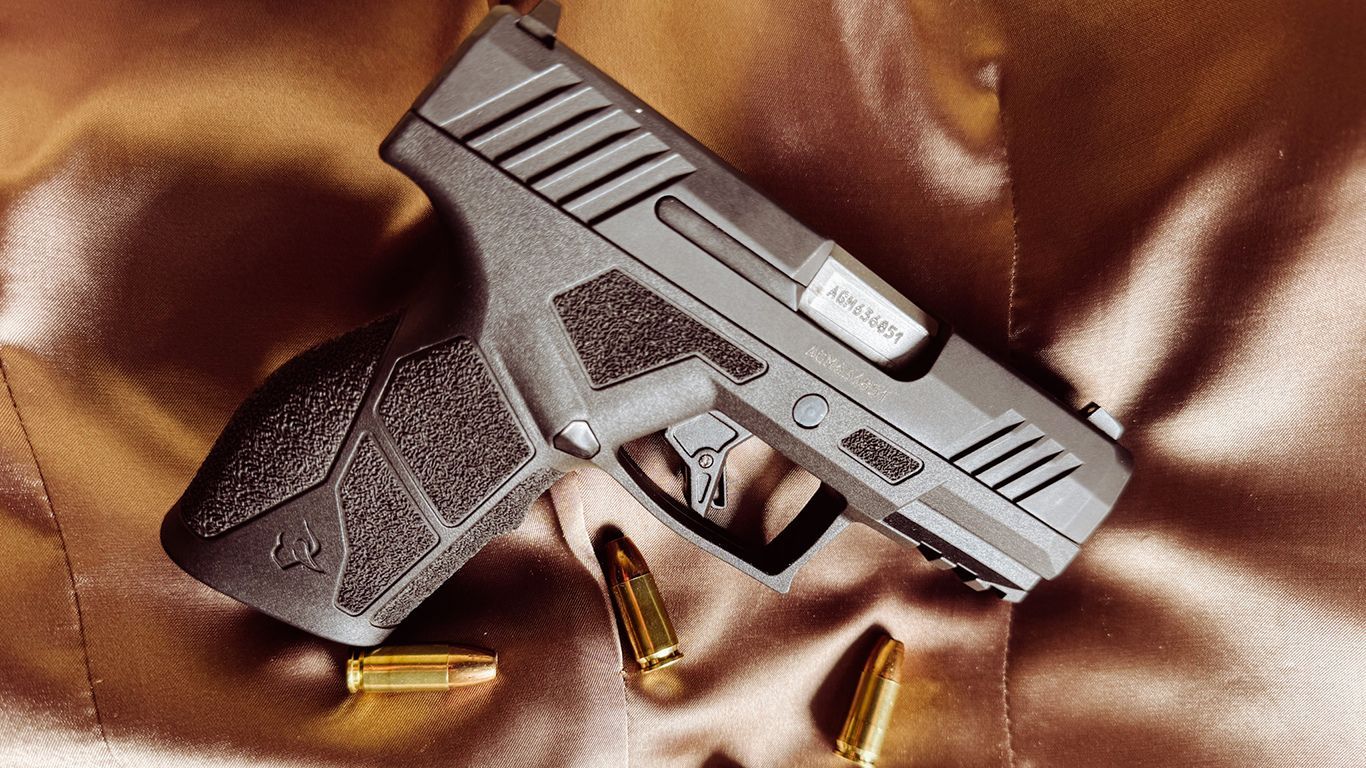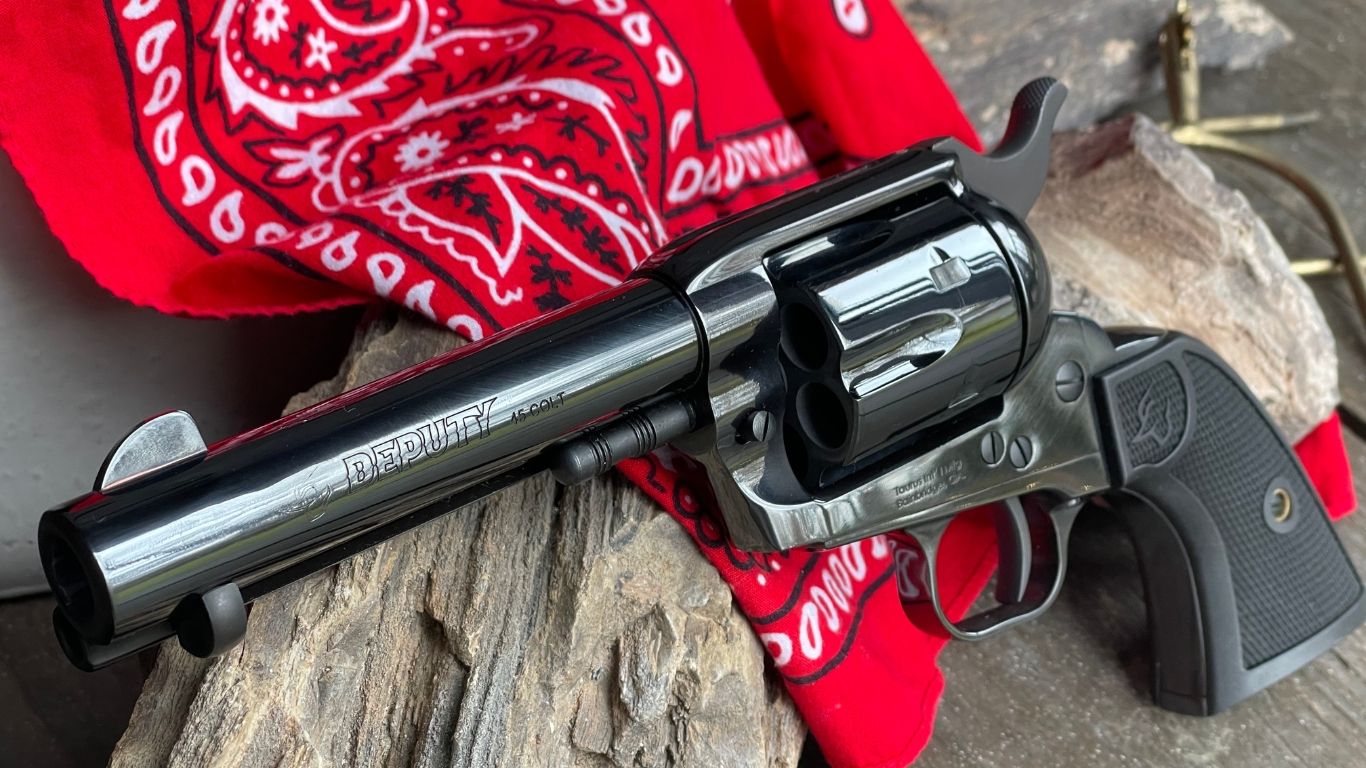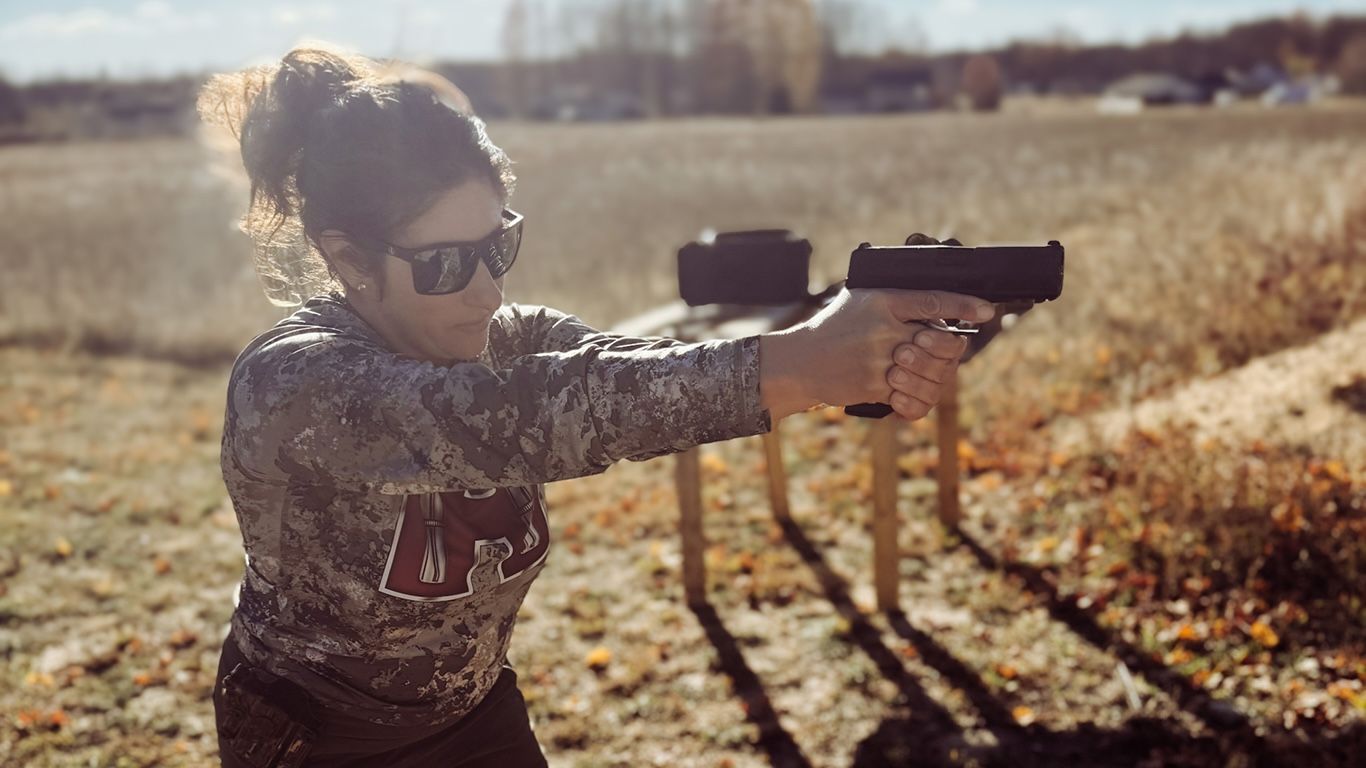Written by Chris Cypert
Any set of gun handling rules worth abiding by include these two constants: Always keep the muzzle pointed in a safe direction, and always keep your finger off the trigger until beginning the intentional act of shooting. These aren’t just “range rules,” but are prudent and essential gun handling rules to be observed even during real-world defensive gun uses. There are occasions in life where we may be justified in drawing our gun defensively in anticipation of action, but it is not yet time to press the trigger. In these cases, we need what are called “ready positions.” To use any ready position competently in the real world, it needs to be routinely practiced on the range. Perhaps the most universally used ready position is the “low-ready position,” and any student of defensive pistolcraft should know it and use it regularly during range practice.
The Not-Ready Position
Before we get into what the low ready position is, it is important to discuss what it is not. If you asked 100 random handgun owners to demonstrate the low ready, you would get likely get a wide variety of techniques, and some of them would be what I call the “Not-Ready Position.” While the low ready requires depressing the muzzle below our line of sight and potential targets in front of us, people often lower their muzzles too far. I often see shooters establish a two-handed grip on the gun and then, with their arms extended, point their muzzle toward the ground between their feet only a few inches in front of them. While this is a “muzzle-aversion technique” that will help prevent you from pointing your gun at other people, team members, or objects in an unsafe manner, it misses the other goal of ready positions: To ensure your gun is positioned to be ready to shoot quickly if you decide to do so. There may be times when pointing your gun straight down between your feet is necessary, such as in close proximity to others at whom you don’t wish to point a gun, but generally speaking the low-ready position is considerably less low than most people imagine it.
How to Perform the Low Ready
The low-ready position is a position that depresses your muzzle low enough to keep the gun pointed in the safest possible direction, but allows you to clearly see what is in front of you, and shoot quickly once the situation in front of you dictates you have to do so. The low ready is for situations where you may have an imminent need to shoot and there is nothing on the ground between you and your potential target that you need to avoid pointing your gun at. Precisely what it looks like can change slightly depending on context, but generally you should have the gun extended fully in front of you in your firing hand with the muzzle lower than your line-of-sight, and higher than the ground between your toes. Until you’ve made the decision to shoot and have begun the act of shooting, your finger should remain off the trigger and straight along the frame or slide of your handgun. The way to develop and practice a proper low ready for self-defense on the range is simple. Using a silhouette target at typical self-defense distances of 3-7 yards, raise your handgun and put your front sight on the high center mass area of the silhouette torso. Then, keeping your eyes on the target, lower your handgun until you can look over the top of your handgun and clearly see the target’s hands and waistband, or where they would be if your target doesn’t have hands or a visible waistband. This is the standard low-ready position. The low ready position means the muzzle is depressed low enough to see and assess your potential target, but still be able to get the gun on target quickly if you make the decision to shoot. That doesn't mean pointing the gun at the ground at your feet.
Low-Ready Context
Some argue for a low-ready position low enough that it does not point the muzzle at any part of another person’s body until the decision has been made. For military personnel and law enforcement officers, who have much broader latitude to brandish firearms in the course of their duties, this is likely a sound practice. However, for private citizens in public spaces, our guns should not be in our hands at all until we reasonably believe it is necessary in response to imminent lethal force. If I draw my holstered handgun in public and point it anywhere without a legally justifiable reason, the local prosecutor is unlikely to be sympathetic when I point out that technically my muzzle was pointed just below an innocent citizen’s feet and just off to the right. In conditions where someone appears threatening enough that I’m drawing my gun as a private citizen, then I am comfortable with the muzzle possibly pointing at their lower extremities as I evaluate the situation and make a shoot-no-shoot decision. If I cannot reasonably articulate “muzzling” a person’s lower extremities as I prepare to defend myself from them based on their threatening behavior, then I shouldn’t have drawn my gun in the first place. In many private citizen self-defense scenarios the decision to shoot will be made with the gun still in the holster and no ready positions will be needed. An example of this would be pumping gas and having an aggressive stranger rounding your front bumper, issuing threats and closing with a knife in hand. However, there are scenarios where you could legally articulate drawing a gun to the ready before having made the decision to shoot, such as someone approaching aggressively and making threats to shoot/stab you with their hand concealed furtively behind them or in their waistband. Or someone approaching with a brandished knife or impact weapon who is far enough away that you have the time and distance to refrain from shooting immediately. In these cases, the low ready is extremely useful.
We Have to See Before We Shoot
The reason it is important to see hands and waistband is because people hold lethal weapons in their hands, and if their hands are empty and they decide to access a lethal weapon concealed on their person, it is most commonly stored in the waistband or a pocket. To make legal and ethical lethal force decisions, we need accurate information about the threat being presented to us, and obscuring our targets hands and waistbands is detrimental in two ways: First, if a seemingly unstable person is standing in our driveway screaming threats at us and we aim our handgun at their high torso as we tell them to go away, we may miss them accessing a weapon or beginning to present it until it is too late. Secondly, obscuring the hands and waistband of a person can be detrimental if it causes us to then mistake their furtive movement or partially obscured objects for drawing a gun or a knife, when in fact the obscured object was a wallet or a cell phone. Obviously, in the regrettable event we have to use lethal force to protect ourselves, we want to make the right decision, and doing so requires that we have the most accurate information about what’s happening. That requires seeing clearly and accurately, and that requires a ready position that allows us to do so.
Conclusion
If you find yourself in a situation where a lethal threat appears imminent, but you do not have to press the trigger just yet, then drawing to the low ready can be a justifiable and prudent option that puts you in a position to dissuade your attacker, or protect yourself if they aren’t dissuaded. If it is a skill we want for self-defense use then we must practice drawing to the low-ready routinely on the range and then, having decided to shoot, presenting the gun from the low ready and scoring rapid, accurate hits on target. Make sure you are regularly incorporating low-ready position practice into your range sessions.




















